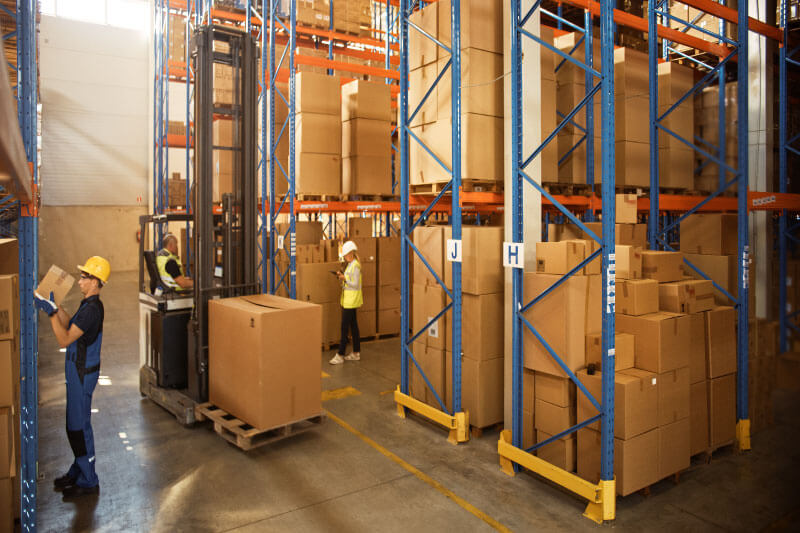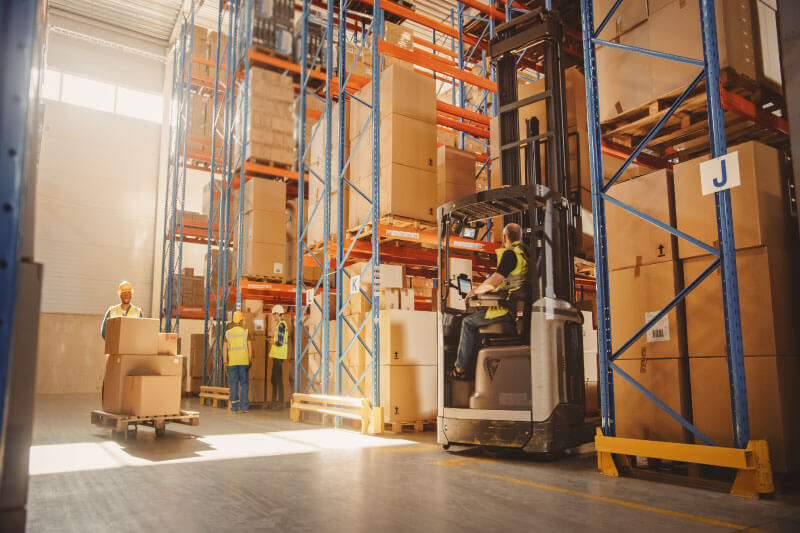Table of Contents
In recent years, there has been an increasing focus on warehouse safety. This is due in part to the growing number of occupational safety accidents that have occurred in warehouses, as well as the rising cost of workers’ compensation claims.
According to the Bureau of Labor Statistics, the rate of fatal occupational injuries in warehousing worker injury rate has increased by nearly 60% since 2011. In addition, the average cost of a workers’ compensation claim for a warehouse worker has increased by nearly 30% over the same period. These statistics indicate the growing concern for warehouse safety among employers and employees.
By understanding the risks associated with warehouse operations and implementing the ideal warehouse safety guidelines, employers can help create a safer work environment for their warehouse employees.
What is RTLS built for warehouse safety?
With the rising need for industrial sectors like transport and material handling and moving occupations to increase productivity, the occupational safety aspect of workers has taken a huge setback.
Emergency procedures are being ignored, warehouse safety tips are sidelined concerning their implementation, safety risks apply to every aspect of a warehouse environment, and something as simple as personal protection according to the Occupational Safety and Health Administration (OSHA) guidelines receives no second thought in the busy schedules.
It isn’t enough to have human intervention through warehouse safety rules when there is no regard for the same. But when it comes to technology that passively and actively ensures ideal hazard communication to the warehouse workers, there are numerous solutions available.
Ensuring Warehouse safety through RTLS solutions
There are numerous practical methods and technologies that conform to warehouse safety standards and can help in assuring the safety of warehouse workers as well as assets. One among them is an RTLS system.
RTLS is short for real-time location systems. It’s a technology that uses sensors and software to track the location of people or objects in real time. A typical RTLS system consists of three main components: tags, readers, and a software platform.
Tags are attached to people or objects, and they emit signals that are picked up by readers. The software platform then uses these signals to track the location of the tags in real time.
RTLS solutions are now used in a wide variety of settings to ensure critical hazard communication, including healthcare, retail, transportation, and warehouse safety.
One of the most important benefits of RTLS is that it helps to improve operational efficiency. For example, in a warehouse setting, RTLS can be used to track inventory and assets, which can help to improve picking accuracy and prevent losses.
Additionally, RTLS solutions can provide valuable insights into how people and equipment are moving around a facility. This information can be used to improve traffic flow, optimize workspace layout, reduce warehouse hazards, and streamline operations.
What are the common problems encountered in warehouses?
Anyone who has ever worked in a warehouse can attest to the fact that they are often chaotic places. There are always things being moved around, and it can be easy for things to get misplaced or lost.
Here are some of the common hazards that warehouse workers encounter in a warehouse environment.

Dangers of heavy equipment
One of the most common dangers involving heavy equipment is being struck by a moving object. Workers who are not paying attention can be hit by a swinging arm. Similarly, personnel not properly trained in how to use the equipment can easily hit other objects or individuals, or cause incidents of forklift collision, especially when driving in a tight and busy area.
Another danger is getting caught between two objects, such as being caught between a forklift and a wall. This can result in crushing injuries or even death. Additionally, workers can be injured if they are caught in the path of a moving vehicle.
Heavy equipment can also cause fires and explosions, which can put workers at risk of burns or other injuries. Finally, workers may be exposed to harmful chemicals and fumes when operating heavy equipment without proper gear for protection.
Trip hazards
Anyone who has worked in a warehouse before knows that warehouses are areas where safety measures must be taken. There are many potential trip hazards, from boxes and pallets to uneven flooring and loose cables.
Falling can have serious consequences that endanger the employee’s life. That’s why it’s so important to be aware of potential trip hazards and take steps to address them.
Chemical exposure and fire hazards
Another one of the most common hazards in a warehouse environment is the risk of fire. There are many potential sources of ignition in a warehouse, such as electrical equipment, welding torches, and open flames that demand stringent fire safety protocols in place.
Additionally, warehouses often contain large quantities of flammable materials and hazardous chemicals, such as paper products, chemicals, and petroleum products. As a result, a fire in a warehouse can spread quickly and be difficult to extinguish. Furthermore, the high ceilings and large open spaces in warehouses can make it difficult for people to evacuate safely in the event
Manual lifting/handling injuries
According to OSHA, more than one million workers in the United States are injured each year while lifting or handling objects at work, contributing to the rising warehousing worker injury rate. Many of these injuries could be prevented with proper training and safety measures.
Another hazard is repetitive motion, such as repeatedly lifting objects or running on a conveyor belt. Investing in personal protective clothing can go a long way in mitigating worker safety risks.
Electrical hazards
Storage facilities and warehouses can be dangerous places if the proper precautions are not taken. One of the most common hazards in these environments is electrical shock. This can occur when workers come into contact with live wires or exposed electrical components.
In addition, electrical shocks can also be caused by static electricity build-up, Arc Flash, or faulty equipment. To avoid these hazards, it is important to follow all safety procedures and wear the proper Personal Protective Equipment (PPE).
How can an RTLS help improve warehouse safety?
Despite the numerous efforts taken to increase warehouse safety and implement the proper measures, mechanical accidents still happen, workers get injured unexpectedly, and errors are always made unknowingly.
RTLS systems are accurate in their operations and can help improve warehouse safety and the proper implementation of warehouse safety measures in several ways.
Safeguarding the workforce through real-time employee and asset tracking
First, RTLS can help to identify potential hazards within the workplace. By tracking the locations of employees and asset tracking, RTLS can help to identify areas where there is a high risk of accidents occurring. This information can then be used to improve safety procedures and processes within the workplace.
For example, RTLS can be used to track the location of mobile assets such as forklifts or vehicles, ensuring that they are used in accordance with safety protocols.
In addition, a connected worker RTLS can be used to monitor employee safety data, such as hours worked, breaks taken, and safety incidents. This data can then be used to identify and address potential safety issues.
Creating virtual borders around dangerous workplace areas
An RTLS can contribute to proper ergonomics by creating virtual fences around dangerous areas. These fences will trigger an alarm if an employee or piece of equipment enters the area, helping to prevent accidents and injuries.
The warehouse management can then look into further improvements in employee movements and reduce the probability of such incidents through model awareness.
Improves emergency response times
If an accident does occur, RTLS can be used to quickly locate employees and assets in order to provide assistance or employ emergency procedures. This can help minimize the amount of damage that occurs.
Why Litum is the best at providing RTLS for warehouse safety
If you manage a warehouse, you know that safety is a top priority. There are many potential hazards, from heavy machinery to risks posed by environmental factors like dust and fumes. And with the pandemic still raging, ensuring the safety of your workers is more important than ever.
If you’re looking for a way to improve warehouse safety, Litum can help. Litum is a leading provider of indoor location tracking services (RTLS) and software. Our RTLS solutions for warehouse safety can help you track the location of assets and personnel in real time, improving situational awareness and reducing the risk of accidents.
Moreover, our solutions are highly scalable and can be customized to meet the specific needs of your operation. So whether you’re managing a small warehouse or a large distribution center, Litum has the right solution for you. And because we’re constantly innovating, you can be confident that you’re always getting the latest and greatest technology when you partner with us.
So, if you’re ready to take your warehouse safety to the next level, contact Litum today. We’ll be happy to show you how our RTLS solutions can benefit your operation.






